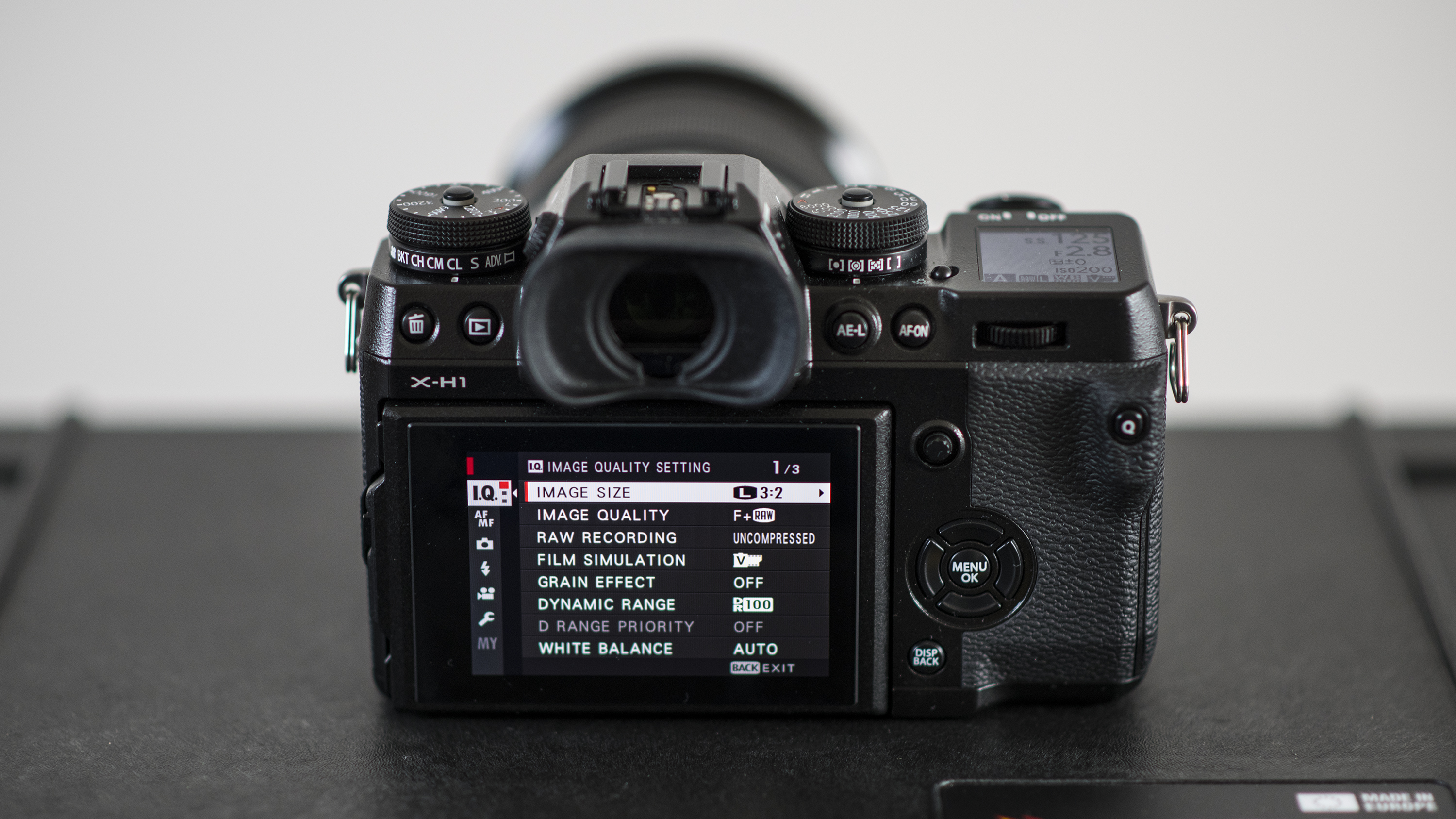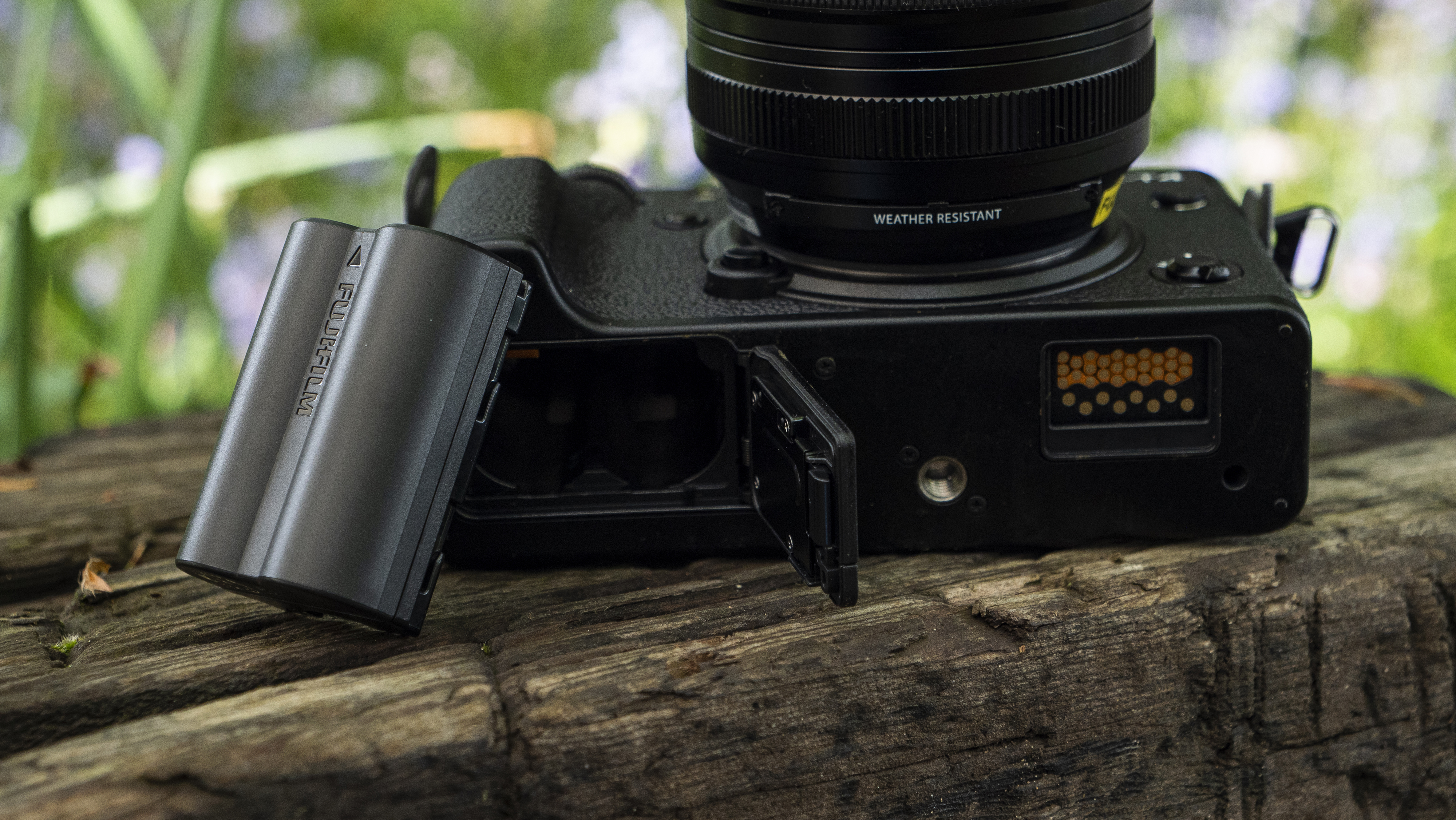The long-awaited Fujifilm X-H2 has taken a significant step closer to its launch, with Fujifilm announcing that it'll be launching its new 5th generation X-series cameras at an X-Summit event in May. Fujifilm hasn't mentioned the X-H2 by name yet, but the rumors strongly suggest that the the X-H1's successor will arrive at that event.
So why the excitement about the X-H2? After all, the Fujifilm X-H1 has become something of a forgotten camera, despite its excellent specs. The main reason is because, as Fujifilm mentioned, it's expected to be the torch-bearer for Fuji's next-generation sensor and processor – and the rumors suggest that sensor will have a stacked design.
This is a big deal because the latest flagship full-frame cameras now sport stacked sensors – which bring the read-out speeds needed for fast burst shooting and 8K video – but it's not a feature that's generally found on lower-end cameras. High-end X-series models like the Fujifilm X-T4 aren't cheap, but they do pack pro-friendly power and features into smaller, more affordable bundles than their full-frame rivals.
So what other features will the Fujifilm X-H2 bring, and will it really arrive in two versions as the rumors suggest? We've rounded up all of the latest speculation here, along with our thoughts on what we'd like to see from one of the most exciting cameras of 2022.
Fujifilm X-H2 release date and price
It now looks almost certain that the Fujifilm X-H2 will be announced in May. In a YouTube video released on January 9, Fuji's Director of Business & Product Development, Yuji Igarashi, announced that the company's next X-Summit event will take place in May. And that "in 2022, the 5th generation X-series cameras will be announced".
That's an important distinction, as Fujifilm has only officially promised that its 5th-gen X-series cameras will arrive sometime this year. Still, reliable rumors sites like Fuji Rumors have concluded that the X-H2 will at least be announced in May – and will even arrive in two versions. Whether the X-H2 will actually be available to buy then, though, isn't yet known.
In terms of pricing, the latest speculation from Fuji Rumors suggests it'll "cost less than $2,500". This suggests it'll be pricier than the Fujifilm X-H1, which arrived for $1,899 / £1,699 / AU$2,700 (body only) back in 2018, although it's not yet clear whether this will be the case for both versions of the camera.
Still, a sub-$2,500 price tag (which likely works out to around £2,400 / AU$4,500 in real terms) would make the X-H2 cheaper than full-frame rivals with similar powers like 8K video. The full-frame Canon EOS R5, for example, costs $3,899 / £4,199 / AU$6,899, while the Sony A7 IV is available for $2,499 / £2,400 / AU$$4,299 (body only). Neither of those cameras has a stacked sensor, either.
A higher price tag than the Fujifilm X-T4 ($1,699 / £1,549 / AU$2,999) also makes sense, although it seems likely that the X-H2 will be closer to that rumored sub-$2,500 figure.
Fujifilm X-H2 rumors and leaks
According to recent rumors, the Fujifilm X-H2 is shaping up to be a landmark camera that takes the X-series into a new generation of sensors and processors.
On August 26, Fuji Rumors confidently predicted that the X-H2 will have an X-Trans sensor rather than a Bayer design. Fuji's X-Trans sensors have a different 'color filter array' to the more common Bayer design, which produces some apparently unique characteristics.
Many Fujifilm fans claim that X-Trans sensors produce improved sharpness and better high ISO performance, but it's also true that X-Trans demosaicing (the process by which a color image is constructed from the sensor output) is more processor-intensive and can hit battery life.
Still, perhaps more important is the fact that the Fujifilm X-H2 could be the first camera to showcase a new stacked APS-C sensor. The company's latest 26.1MP BSI X-Trans CMOS 4 sensor, which we first saw on the Fujifilm X-T3 in 2018, has likely hit its limits. It's time for another leap forward if Fujifilm is to compete with full-frame cameras from Sony, Canon and Nikon.
On September 8, a report in Fuji Rumors suggested that the camera will be housing a 40MP sensor. Fujifilm also revealed at its last X Summit that a 'stacked' sensor design was on its way for the X-series – and that its next X Summit would take place in May 2022.
As we've seen on cameras like the Sony A1, a 'stacked' design (which allows the sensor to have multiple layers of circuitry behind the photodiodes) can bring big potential benefits in areas like burst shooting, autofocus and video.

Also, in an Imaging Resource interview in 2020, Shin Udono (Fujifim's Senior Manager of Sales and Marketing), said that "we need some sort of breakthrough, probably" in order to separate the X-T line from the X-H series. He also agreed with a statement that the X-H series is where "new technology enters the product line".
While that could also refer to other features, like the X-H1's introduction of in-body image stabilization (IBIS) in Fujifilm cameras for the first time, there's a good chance that it's referring to a new sensor. Another reason to believe this is the apparent leak, picked up by EOSHD , of a new stacked APS-C Sony sensor that has a 43MP resolution and can shoot 8K video with 12-bit color depth – that puts it close to the 40MP rumor, too.
But we're still firmly in the realm of rumors here – and even if that Sony sensor leak is true, it's far from certain that Fujifilm would be able to use it in the X-H2 or other X-series cameras. As FujiAddict noted at the time of the leak, Sony could instead use this chip exclusively in its own APS-C Alpha cameras, which are also due an upgrade.
Still, the rumors that the X-H2 will introduce that now confirmed new sensor seem very likely. Fujifilm has admitted in its Fujicast podcast that the current 26MP sensor, seen in the recent Fujifilm X-E4, is likely reaching the end of its life, so we can expect to see a new chip in the X-H2. But what other features would we like to see the camera bring?
It now seems increasingly likely that the X-H2 will arrive in two versions. On December 8 2021, Fuji Rumors said that "solid and reliable" sources had revealed that there will be two versions of the Fujifilm X-H2, one with a 40MP sensor and another with a 26MP sensor.
It's not year clear if both of these will be new sensors or, perhaps more likely, the 26MP model will have the current fourth-generation chip. This would certainly make it more affordable than the 40MP version, but would be an unusually complicated approach for Fujifilm.
Fujifilm X-H2: what we want to see
1. A higher-res EVF
One of the Fujifilm X-H1's strengths when it launched was its "brilliant viewfinder", as our review called its 3.69 million-dot OLED EVF. That said, as Fuji's expected flagship, we'd expect the X-H2 to take the EVF up a level again.

Viewfinders have now moved onto incredible 9.44-million dot monitors with 0.90x magnification, like the one seen in the Sony A1. But perhaps more realistically, we'd like to see the Fujifilm X-H2 get a viewfinder like the one seen on the Sony A7R IV, which is a 5.76-million dot affair with 120fps refresh rate, which is handy for getting a smooth preview of fast-moving scenes.
2. A new battery
One feature that's almost guaranteed on the Fujifilm X-H2 is support for the new battery that Fuji introduced on the Fujifilm X-T4.
The Fujifilm NP-W235 is a larger-capacity battery than the older NP-W126S and on the X-T4 we found it was a significant step up, offering around 600-shots per charge.

Strong battery performance is particularly important on hybrid cameras that shoot a mix of video and stills, which is what we're expecting from the X-H2 – and it'll also likely get a battery grip, either in the form of compatibility with the VPB‑XH1 or a new grip that can house an extra two batteries.
3. Powerful 8K video skills
The Fujifilm X-T4 is already a pretty powerful video camera that can shoot 4K/60p video – so we'd expect to the X-H2 to take that up another notch.
Whether than means 8K video, a rumor that's come from that potentially leaked 43MP Sony sensor, remains to be seen – but we'd certainly like to see a 6K video mode at least.
This would help provide some handy extra leeway, for example giving you the option of stabilizing a shaky video in post-production or creating over-sampled 4K footage that gets a lift in detail and sharpness.
But the latest rumors from April do suggest that a leap to 8K video is now looking the most likely, which would give videographers the option of cutting a single piece of footage into a few different 4K angles.

Perhaps even more important and helpful than a resolution boost would be a removal of video recording limits.
The Fujifilm X-H1 could only record continuously for 30 minutes at a time, so we'd like to see the X-H2 redesigned to manage heat better and allow the camera to match the impressive extended recording powers of cameras like the Sony A7S III.
This could be particularly challenging to achieve with the rumored X-Trans sensor, which tend to be more processor-intensive than a Bayer design, so we'll be interested to see if and how Fujifilm manages to achieve this.
4. Better ports
A couple of slight gripes we had with the Fujifilm X-H1 were its micro HDMI port, which tends to be less reliable than the full-size HDMIs seen on cameras like the Panasonic GH5, and the fact that its headphone jack was only available on its battery grip.

We'd like to see both of these things fixed on the X-H2, along with support for on-the-go USB-C charging and possibly even a CFexpress card slot, as previous rumors have hinted at.
5. Next-gen autofocus
Fujifilm's autofocus has improved a lot on recent cameras like the Fujifilm X-T4, which doubled the tracking success-rate of its predecessor and fine-tuned its Face / Eye AF performance. But it still lags behind the best AF performance we've seen from rivals like the Sony A6400 and Canon EOS R6.

Sony has, in particular, really nailed autofocus performance in mid-range cameras, with impressively 'sticky' tracking and advanced Animal Eye AF a real boon for wildlife snappers, too.
We'd like to see the Fujifilm X-H2 introduce some next-gen AF performance that helps it at least draw level with similarly-priced rivals, as this would be a real boon for everything from portrait shooting to video.
- These are the best video cameras you can buy right now
from TechRadar - All the latest technology news https://ift.tt/2OS1srw